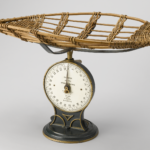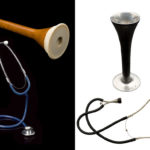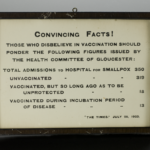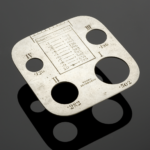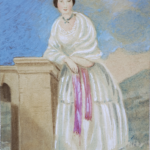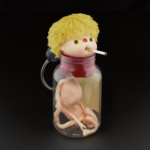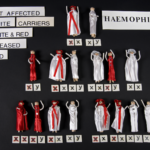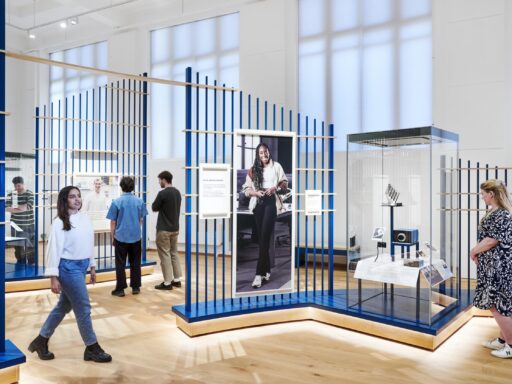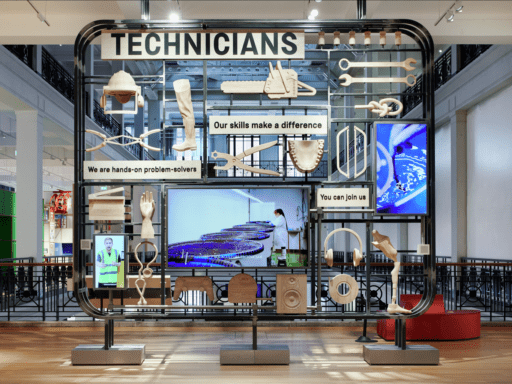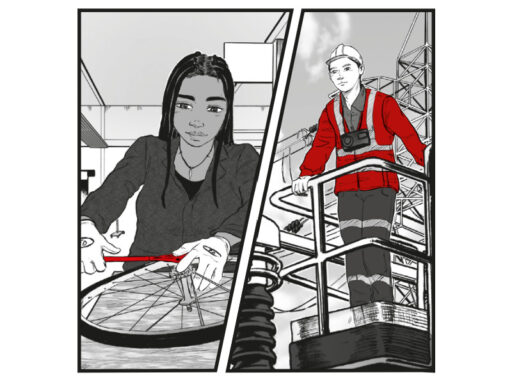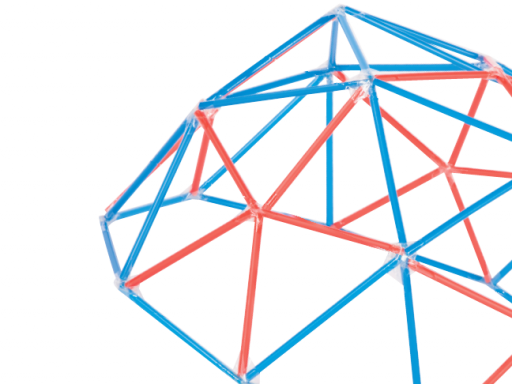Maths is crucial for understanding health and disease. For example, when you go to the doctor, they will take measurements such as height, weight and blood pressure, which give clues about your health.
In epidemiology, maths is used to collect and interpret data about a disease and who has it. Epidemiologists look to discover the cause of a disease, its mode of transmission and the effectiveness of control measures such as vaccinations.
Maths also provides us with the information we need to develop safe, effective treatments through data collection and statistics.
Using maths to understand our bodies and diseases has helped increase our life spans and find effective treatments. Having confidence in maths helps us to understand our own health and make informed decisions.
Images in this resource
Note
Click the thumbnails to skip to the full pictures.
Using images in your classroom
Our Science Museum Group museums are full of amazing objects which are all examples of how STEM (science, technology, engineering and maths) has changed our everyday lives.
You can use images:
- To hook students’ interest at the start of a lesson or to introduce a new topic.
- To highlight the relevance and practical applications of school subjects in our everyday lives.
- As part of a discussion to explore the stories of the people who have shaped the world we live in through their passion and creativity.
- As mystery objects to get your students using their STEM skills such as observation, using prior knowledge and asking questions.
- To create a display of applications of maths in your classroom, connecting past, present and future examples of technology.
- In a pre-visit activity to familiarise students with some of the objects and themes they will find in the Science Museum.
talk about…
Use these questions to help spark discussion with the different images and objects:
- How do you think our understanding of health has changed over the past 200 years? What do you think we know better now than we knew then?
- How could maths be important to helping us understand our health or make informed decisions?
- Look closely at the images. What details can you spot?
- What would you like to know more about? How could you find out more?
- What interests you or surprises you about the images?
- What do these pictures not tell us?
Baby weighing machine
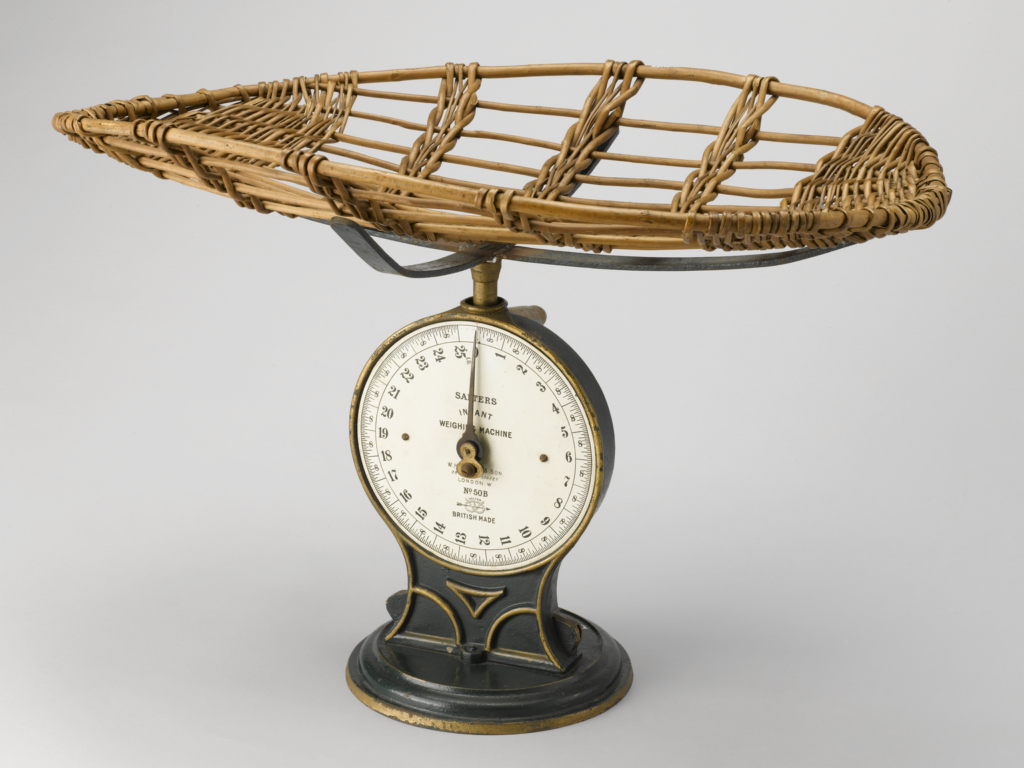
Measurement is a key part of monitoring health. Measuring an infant’s weight and growth over time can highlight medical conditions or the presence of disease.
These baby weighing scales, made around 1900, were used by health visitors. Health visitors monitored babies’ development and advised parents on how to keep their children healthy.
Think and talk about…
What measurements are taken when you go to the doctor?
What suggestions would you give to our prime minister to help our population live a healthy and balanced lifestyle?
Back to top
Stethoscopes
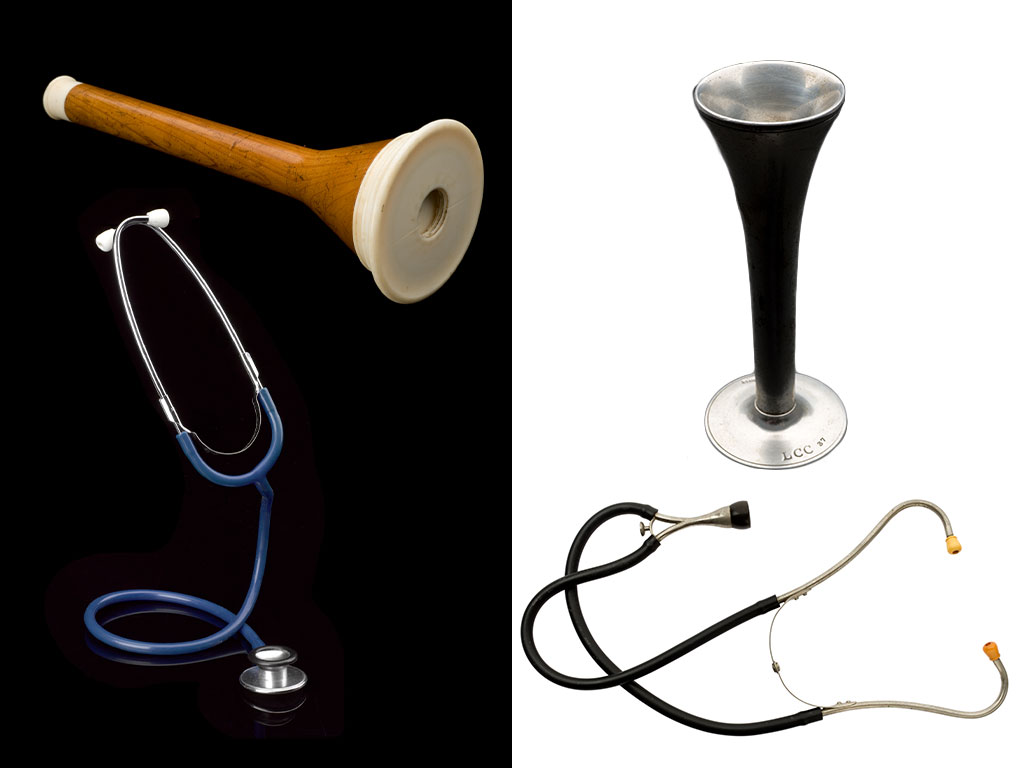
Stethoscopes come in various shapes and sizes and are important to help doctors listen to your body and check for irregularities. They can also be used to measure how quickly your heart beats.
Did you know an average adult human heart beats 60 to 100 times per minute?
Try this…
Try and measure your heartbeat. Was it easy to find?
Back to top
Vaccination poster
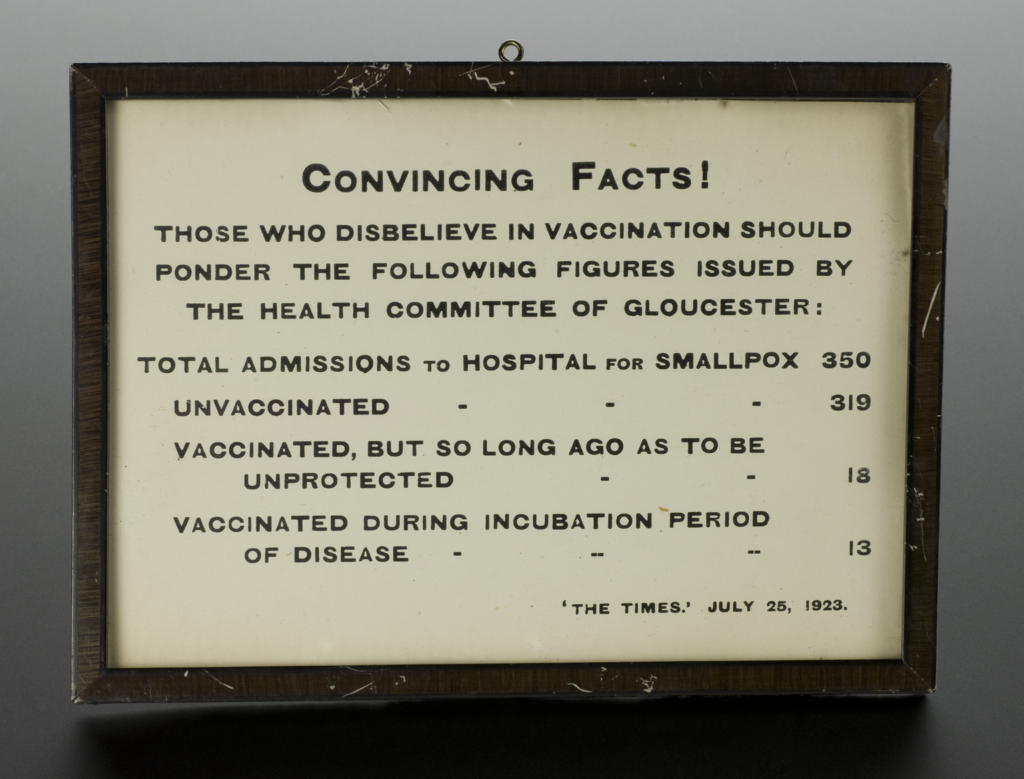
Numbers were used to convince people to get vaccinated.
This poster appeared in The Times in 1923. A smallpox epidemic had been raging in England since the previous autumn.
After a massive global vaccination effort, smallpox was declared eradicated in 1980.
Think and talk about…
Why do you think people needed convincing to get vaccinated? Would these numbers convince you that vaccinations help?
Back to top
Smallpox pustule gauge

In the early 1900s, doctors could tell if a smallpox vaccine had been successful by looking for signs of inflammation and measuring it with this pustule gauge (a pustule is a
pus-filled blister).
If the size of the pustules matched the gauge’s larger circles, the vaccine was successful and a second vaccine wasn’t needed.
Think and talk about…
How do you think we measure the success of a vaccine today?
Back to top
Hand operated water pump
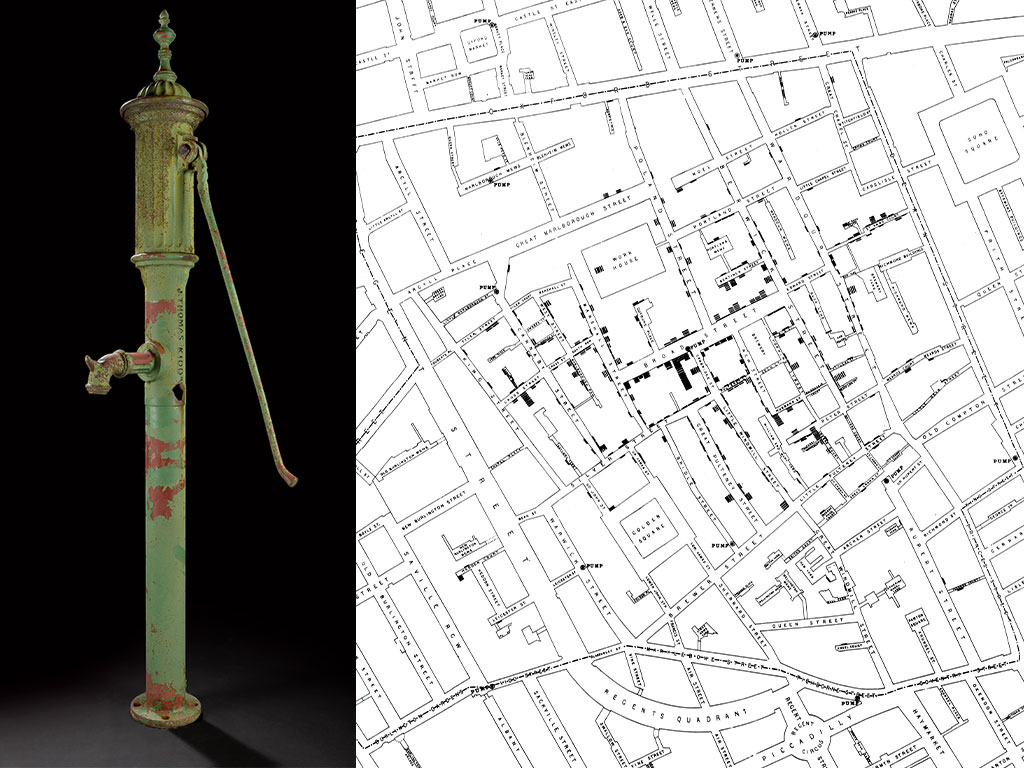
After cholera arrived in the UK in 1831, killing thousands, people didn’t know what was causing the illness.
In 1853 and 1854 physician John Snow gathered evidence suggesting the disease might be a waterborne infection. He recorded locations of cholera deaths and showed that most cases occurred around one public water pump in Broad Street, London.
Think and talk about…
Why is maths important to support or disprove theories?
No-one believed John Snow when he first presented his idea. If you had the data to support your theory, would you have the confidence to disagree with experts?
Back to top
Portrait of Florence Nightingale
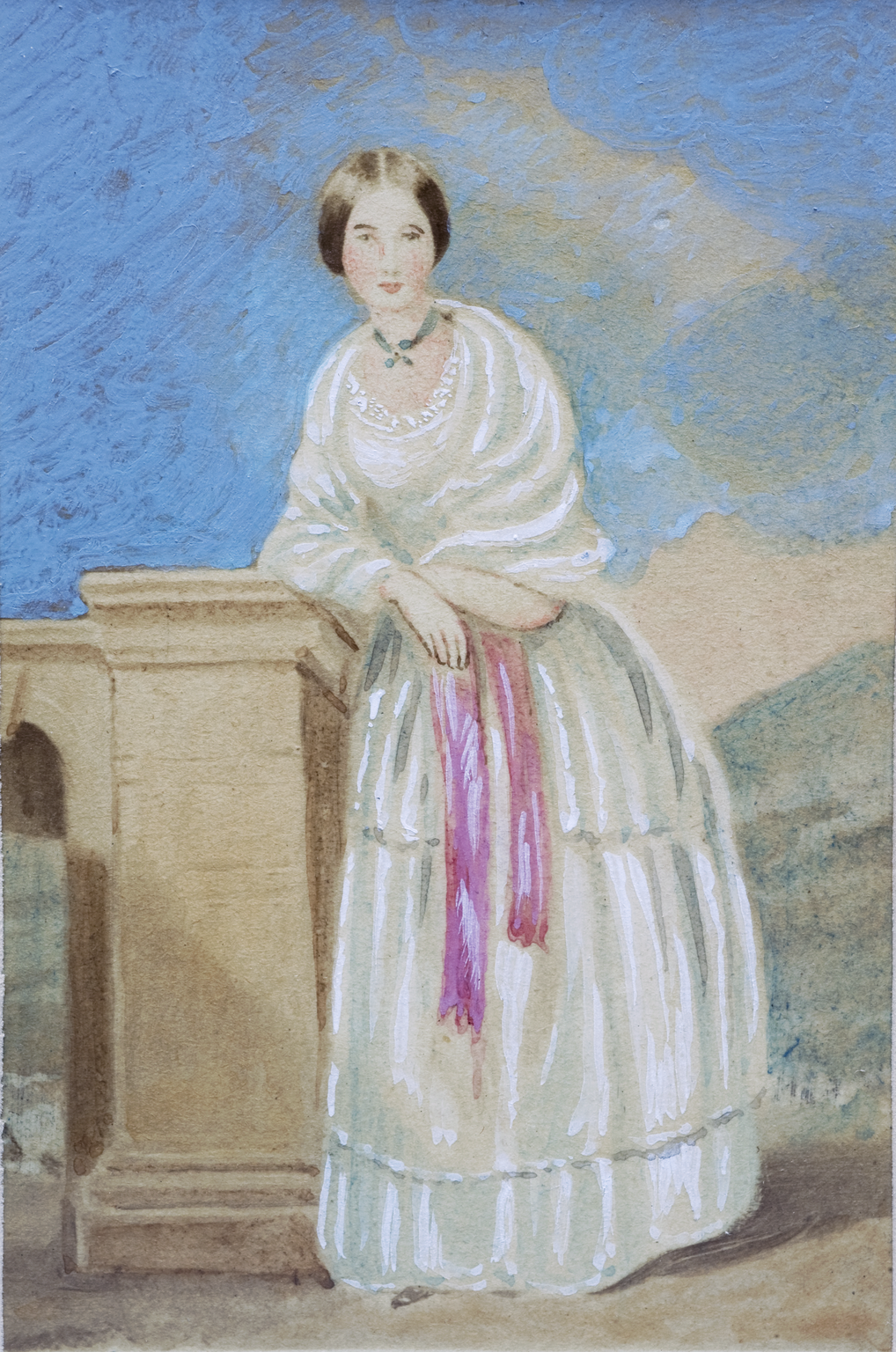
Florence Nightingale was a nurse during the Crimean War (1853–56), when she collected data and made graphs to show the importance of basic hygiene in hospitals. This was a radical suggestion at the time, but she clearly demonstrated that more soldiers were dying from preventable diseases than from their injuries.
Think and talk about…
Why do you think sanitary conditions make such a difference in lowering mortality rates?
Back to top
Public health punch cards

These are punch cards…
Before modern computers, an individual’s data was stored on punch cards like these. One hole would be punched for age range, one for height, and so on. A machine would sort the cards ready for analysis.
Public health experiments involve collecting data from large numbers of people.
Think and talk about…
If you made a punch card representing you, what categories would you include?
Back to top
Thalidomide and prosthetics
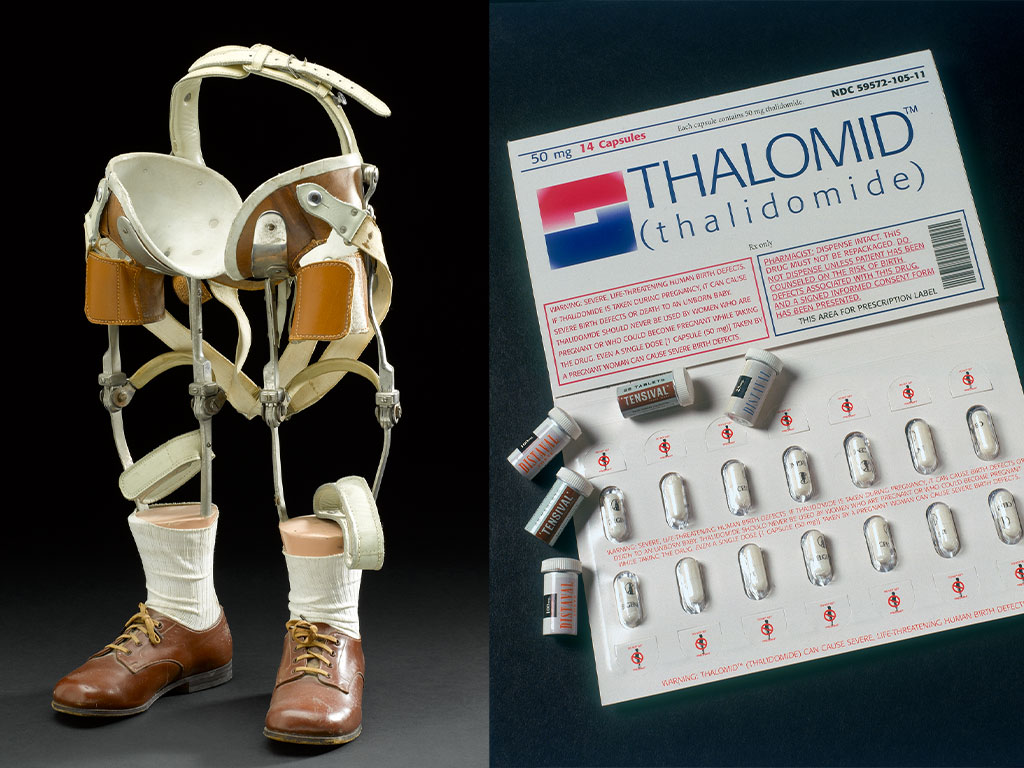
Until the early 1960s, thalidomide was prescribed to suppress morning sickness during pregnancy. It hadn’t been tested on a fully representative sample of people, and too late it was found to cause serious birth defects. This resulted in improved drug testing.
These artificial legs belonged to Eddie Freeman, a child affected by the drug.
Think and talk about…
How do you think drug safety is tested? Why is data collection important?
Back to top
Smokey Sue
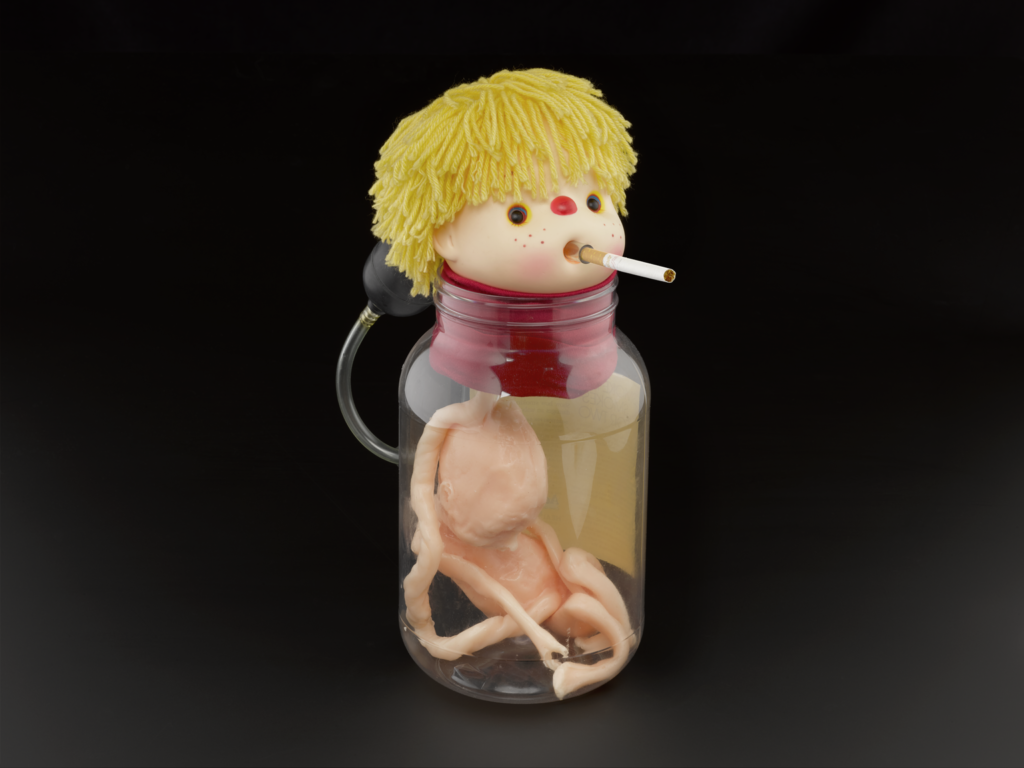
Statistics showing the negative impacts of smoking have been around for quite a while, but campaigns are still needed to educate people about its dangers.
The ‘Smokey Sue Smokes for Two’ health education doll was used to illustrate the effect of cigarette smoke on unborn babies during pregnancy.
Think and talk about…
What other health campaigns have you seen? Do you think they are effective? What would make you take action?
Back to top
Dolls to illustrate how haemophilia is inherited
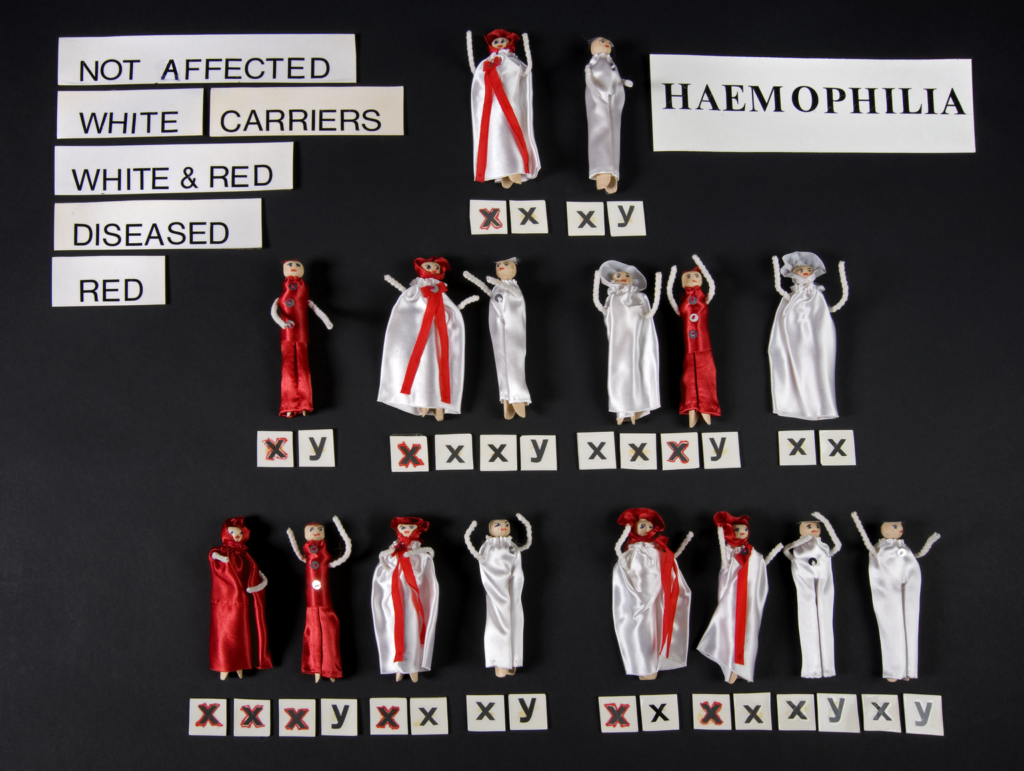
Many diseases, such as haemophilia (a genetic blood disorder), can be inherited. These dolls were used as a teaching aid to demonstrate the transmission of haemophilia over three generations. The odds of you having the disease are dependent on the genes of your parents.
Think and talk about…
If there was a chance you could pass on an inheritable disease, would you want to know?
